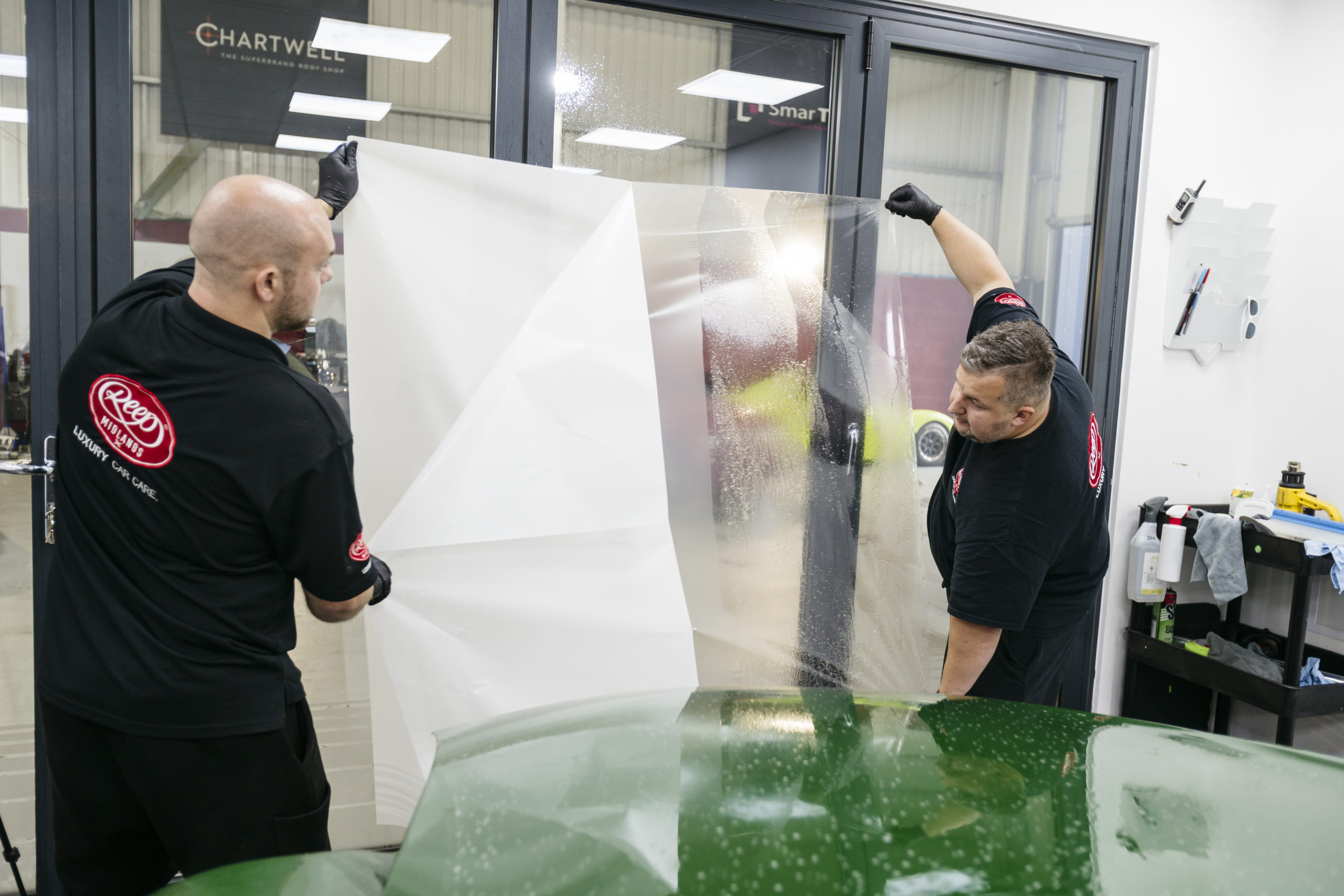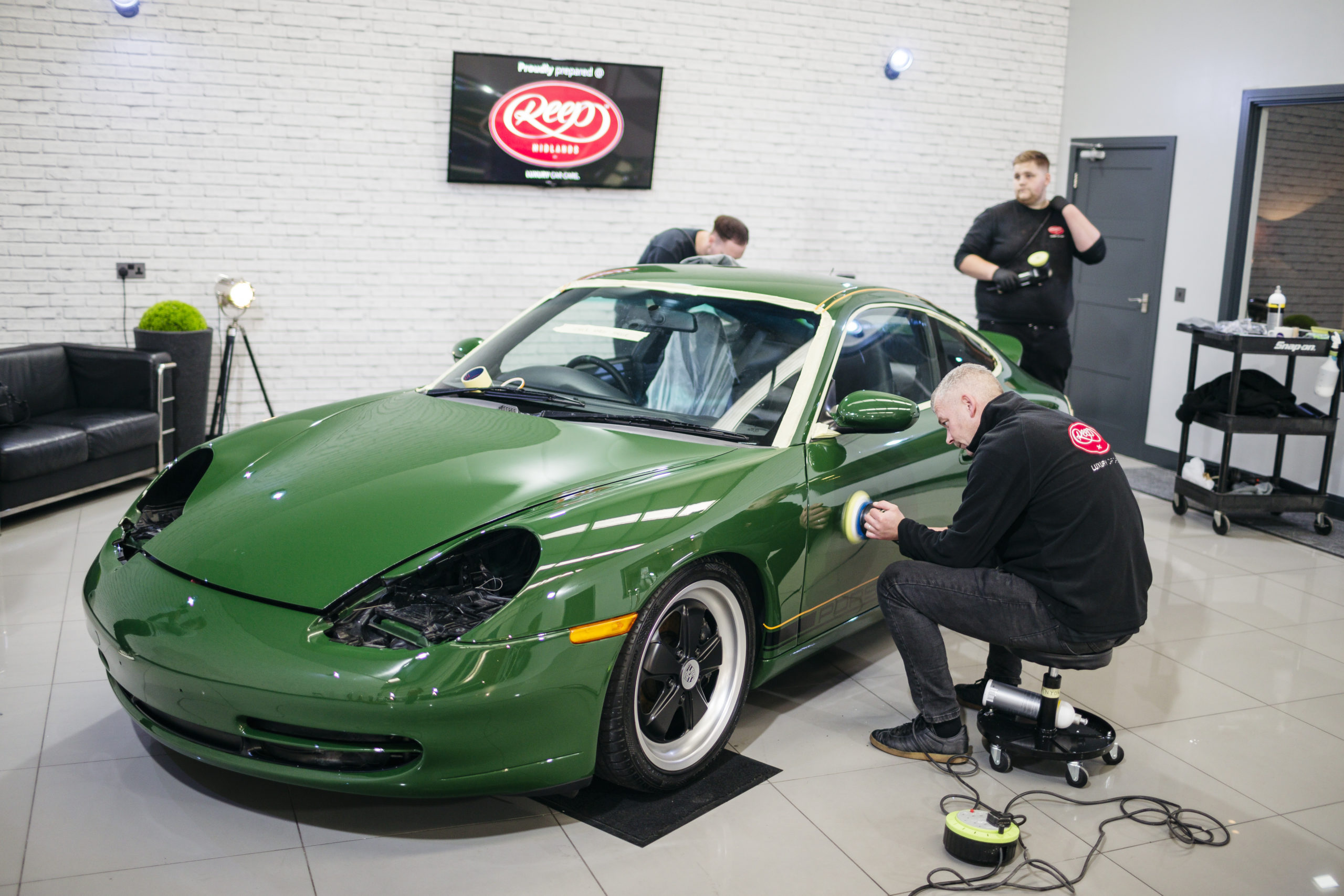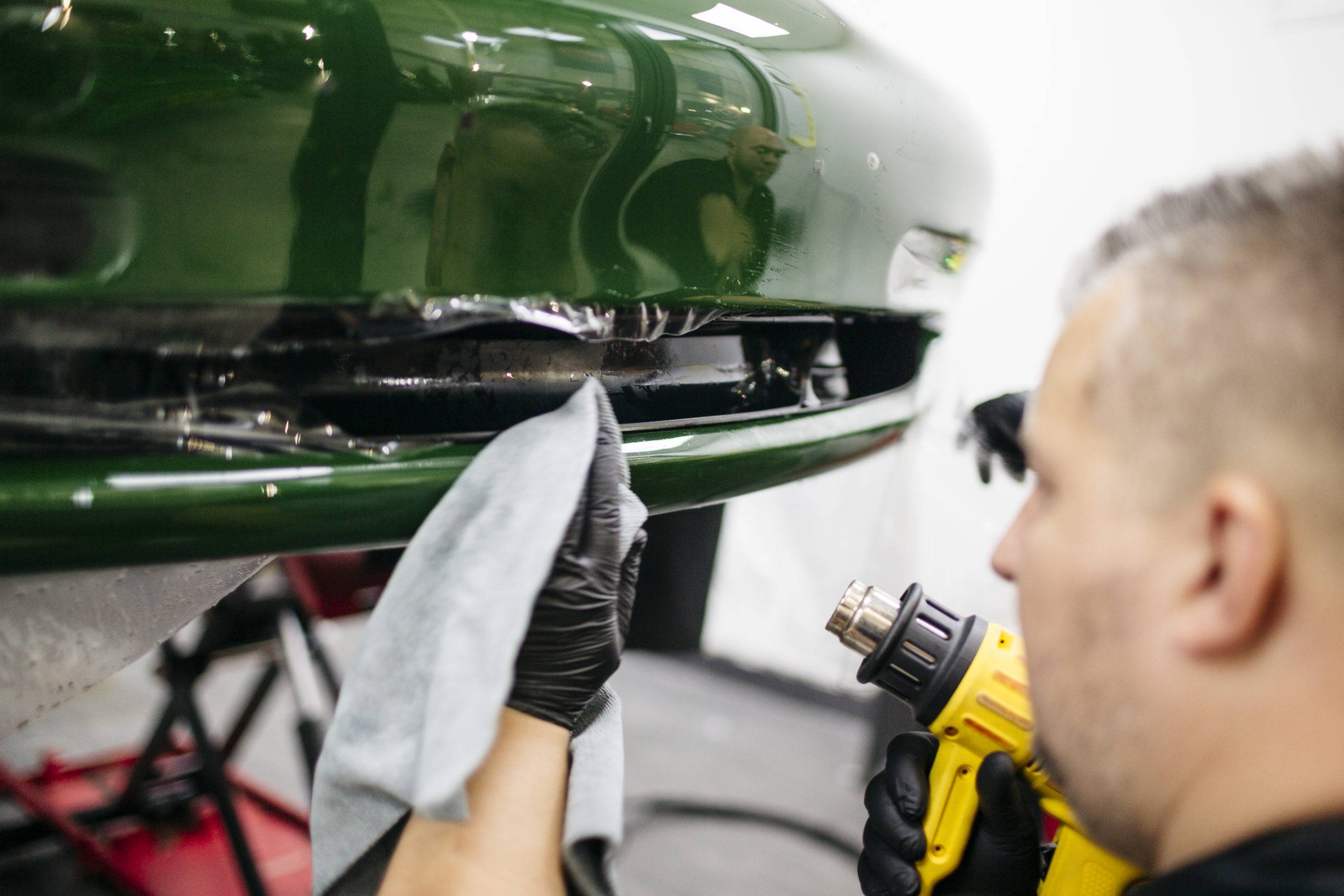Reep Midlands’ step-by-step guide to Paint protection film
‘PPF’ is a term that’s become increasingly prevalent in prestige automotive circles in recent years. Indeed, PPF, or ‘paint protection film’, is seen as an essential investment in the ownership experience of your Porsche, allowing you to use your sports car as intended, free from the worry that your enjoyment on the road might be to the detriment of your car’s paintwork.
PPF is a thermoplastic urethane film that forms an almost invisible shield over your car. Essentially it’s body armour for your vehicle, protecting it from chips and abrasions commonly collected while out on the road. As values of 911s have soared in recent years, owners have increasingly sought to protect what is a rolling investment, where pristine bodywork is a fundamental factor.

PPF as a technology has evolved significantly in a relatively short space of time. Gone are the first-gen films which over time turn milky in appearance, with unsightly cut-offs across the middle of bonnets, for example, as the film technology wasn’t yet at a stage to be able to wrap around complex panels.
Today though, PPF is a subtle yet sublime protectant that’s durable yet discreet, with innovative self-healing qualities, offering water and stain resistance and high gloss properties. The technology means you can now get longer protection for your car’s paintwork too, with many films now coming with a lifetime guarantee.

That’s why it’s viewed as a must-have by collectors and owners of such prestige sports cars as the 911. But how is it applied? Our step-by-step guide to fitting PPF, courtesy of Reep Midlands, tells you everything you need to know…
To read our full guide to PPF, pick up Total 911 issue 199 in store today. Alternatively, order your copy online for home delivery, or download it straight to your digital device now. For more information on PPF and the services offered by Reep Midlands, call +44 (0) 116 344 0096 or visit reepmidlands.com.

Comments (0)